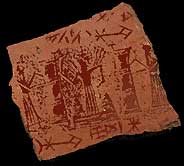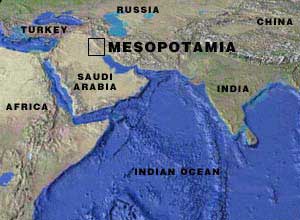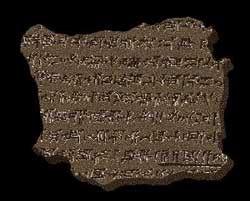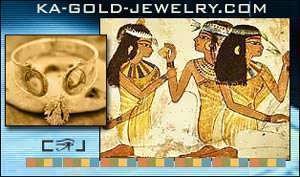From: viewzone.com / http://www.redicecreations.com/specialreports/2006/01jan/devil.html

You would not be surprised to learn that the concept of the devil is very much the same around the globe, and has been recognized in just about every culture for the past millennia. Even people who do not have a clear understanding of God, or believe in a heaven or hell, harbor belief in something akin to the personified master of evil.
I would like to take you on an adventure to explore the origins of the devil, but you will have to be responsible for what you will learn. You can treat it as fiction, which it is not, or you can accept it as another odd tale from the internet, which is how I will present it. A third option is for you to be curious enough to see if what I will tell you has any truth to it, which it does. And when you make this discovery on your own, then you may well wish you had not read it at all.
If you are ready, we will begin with what most people consider the oldest book. In the original Genesis, chapter 6, there is the following passage:
The sons of God saw the daughters of man, and that they were good; and they took them for wives, all of which they chose…
The Nefilim were upon the earth in those days, and thereafter also, when the sons of the gods cohabited with the daughters of Adam, and they bore children unto them. They were the might ones of eternity – the people of the shem.
If you check your modern Bible you will find that this original passage has been reduced to a phrase, “There were giants upon the earth,” while other translations have left the term “nefilim” intact. The Hebrew origins (N.F.L) of this word mean, literally, “to be cast down.” But to gain a more detailed view of the nefilim and their true origins we must go back further than the book of Genesis, to a time that you most likely have never read about in school, or elsewhere.
The truth about the nefilim has been known for many years now. Earlier this century, archaeologists were sifting through mounds of ancient debris in a place called Nippur in what is now Iraq. As they dug deeper, looking for stone artifacts, they hauled countless loads of tiny clay fragments that looked like broken pottery, adorned with designs made of short straight lines. Carelessly piled some distance from the dig, this debris was considered an annoyance and treated with disinterest. The stone artifacts were surprisingly rare at this particular site but, eventually, one was uncovered that left the archaeologists stunned. Like the famous Rosetta Stone that contained Egyptian hieroglyphs and ancient Greek, the stone at Nippur contained ancient Mesopotamian as well as a collection of the same straight lines that had decorated the clay debris. Archaeologists then realized that the clay fragments were not useless pottery, but were part of a vast library written on clay tablets in the oldest known human language.
Translating the odd lines was not easy, but persistence eventually won and the archaeologists had their second great surprise. A tablet written in this new language, called cuneiform, described the library as being “very old” and credited its collection to the Mesopotamian king, Ashurbanipal, who lived about 3000 years ago. In his dedication tablet, Ashurbanipal boasts that he could read several old languages, “including the old writing from before the great flood.” But before you draw any comparisons to the Biblical stories in Genesis, you must hear the rest of what was found.
The archaeological site at Nippur was manned by a diverse group with affiliations to universities all over the globe. When the realization set in and attention was focused on the mounds of debris that had been carelessly dumped in various locations around Nippur, fragments were collected and whisked off to different countries for examination. The small clay fragments had to be carefully pieced together to be read and, often, missing pieces were in collections of other museums and universities. Nevertheless, great progress was being made in assembling several great works that were found duplicated and almost complete. But the nature and content of what was being translated was disturbing.
Ashurbanipal had assembled and translated literature from his own antiquity. How far back in time was “very old” to a king who lived 3000 years ago? Conservative estimates dated many of the written epics to a time before writing, perhaps before 10,000 BC, since they appear to have been composed in a rhythmic verse, to make them easy to memorize. The library thus gives a unique view into man’s past. But the library had many surprises.
For over a millennium, about 5000 years ago, there was one dominant and unchanging belief in what we would today call a religion. In this ancient time religion and culture were identical. The leaders and rulers of men were described as being in intimate contact with the “gods,” who were collectively known as Anunaki. The growing dictionary of words and meanings that was being compiled by the translations of the Nippur fragments quickly hinted to something extraordinary. That the ancient “gods” took their name from “Anu,” meaning heaven, and “ki,” which means earth. Literally, they were “those who came from heaven to earth.”
A surprising number of poems, stories and historical records told a clear story, without the usual symbolism and metaphoric confusion. The facts were there, on the clay tablets, for everyone to read. But, strangely enough, the translation was conducted in an extremely low-profile manner. Even today, when one thinks of an “ancient” culture, the Egyptians –not the Mesopotamians– received the interest. The wealth of details and the coherent story of the cuneiform library from Nippur is undoubtedly the most important archaeological discovery ever made, yet it has been successfully buried and is hidden from the public. Why?
 Here is what you have not been told. A particular work, called the Enumma Elish, describes the formation of our solar system, from a time when it was much different than it is today. This young system had the earth (called Tiamut) and the moon, as well as a number of our sister planets. The epic tells of a rogue planet which enters the system and disrupts gravity, causing one planet to be pulverized and to form the asteroid belt, while another planet is thrown into an elliptical orbit with a solar year, called a “shar,” equal to about 3600 earth years. This particular epic was believed to have been a basic text that was memorized and copied. It has since been found in other excavated sites in Iraq.
Here is what you have not been told. A particular work, called the Enumma Elish, describes the formation of our solar system, from a time when it was much different than it is today. This young system had the earth (called Tiamut) and the moon, as well as a number of our sister planets. The epic tells of a rogue planet which enters the system and disrupts gravity, causing one planet to be pulverized and to form the asteroid belt, while another planet is thrown into an elliptical orbit with a solar year, called a “shar,” equal to about 3600 earth years. This particular epic was believed to have been a basic text that was memorized and copied. It has since been found in other excavated sites in Iraq.
A work called the Atra Hasis is perhaps the most shocking. This text describes the Anunaki as originating on this elliptical orbiting planet, called Nibiru. The planet is apparently suffering from some atmospheric degeneration and has sent a team of explorers to Earth in search of a particular metal — gold. The gold is mined by the “Igigi” who are lower forms of the Anunaki. The Atra Hasis begins where these Igigi are complaining about the difficulties and fatigue that they are having with this physically demanding task.
When the gods instead of man
Did the work, bore the loads,
The gods’ load was too great,
The work too hard, the trouble too much,
The great Anunnaki made the Igigi
Carry the workload sevenfold.
When the Igigi asked for relief from their work the leaders of the expedition, An (the father figure and ultimate leader), and his two sons, Enki and Enlil, held a counsel meeting. The text describes this event as if an impending mutiny was possible, but Enki has a brilliant suggestion.
Why are we blaming them?
Their work was too hard, their trouble was too much.
Every day the earth resounded.
The warning signal was loud enough, we kept hearing the noise.
There is [.-pieces missing- ] Ninhursag the womb-goddess is present
Let her create a mortal man
So that he may bear the yoke
So that he may bear the yoke, the work of Enlil,
Let man bear the load of the gods!
[.-pieces missing-.] Belet-ili the womb-goddess is present,
Let the womb-goddess create offspring,
And let man bear the load of the gods!”
The story continues with the female gender Anunaki, Ninhursag, creating an altered hybrid by using material from one of the Anunaki and of an earth “beast,” primitive man. The Anunaki now had an intelligent worker to do their mining. Soon, these prototype humans (“A-dam” means something like “duplicated” plus “human”) were being specifically designed for certain tasks, including a version with small, delicate features that was used as a house servant by the Anunaki.
The Atra Hasis continues to explain that it was this “delicate type,” with features more resembling the Anunaki themselves, that attracted the Anunaki to mate with them. And it was these “giants on earth” that were remembered in the book of Genesis.
The book of Genesis has more hints to this earlier epic. Ninhursag, who created the first “smarter humans” was celebrated by the Anunaki and she was given the title of “Nin-ti,” or “Lady of life.” Since early Hebrew has multiple meanings for the phrase “ti,” meaning both “rib” and “life,” the creation of Eve by Nin-ti yielded to the errant story of the first woman being created by Adam’s rib (hence “the lady of the rib”).
So where is the devil while all of this is going on?
 To really understand the origins of the devil, one must try to understand the culture of early Sumeria, the land of Mesopotamia. Located in a fertile and well irrigated area between the Tigris and Euphrates Rivers in what is now Iraq, the Sumerian civilization is a real mystery to historians.
To really understand the origins of the devil, one must try to understand the culture of early Sumeria, the land of Mesopotamia. Located in a fertile and well irrigated area between the Tigris and Euphrates Rivers in what is now Iraq, the Sumerian civilization is a real mystery to historians.
Sumerians were broad headed people, physically and linguistically different from all surrounding tribes that existed before or after them. They arrive in Mesopotamia almost instantly — as if from nowhere. What is more perplexing is that their civilization, right from the start, had a government, a highly organized religion, schools that taught mathematics, a system of medicine and highly developed masonry skills. But even more astounding — the Sumerians could read and write! As far as we can tell, they were the first. Where did they come from?
A possible clue is perhaps in one of their earliest myths, which takes place on an island called Tilmun. It is believed by some historians to be the present day Persian Gulf island of Bahrain. They have a myth of the god, Oannes – a half-human, half-fish figure who “came from the firmament to give men culture and learning.” The firmament of this era consisted of both oceans and the heavens (Besides the firmament, there was the solid earth and the underworld.).But the best known of these Sumerian legends is The Epic of Gilgamesh.
We know the legend of Gilgamesh by its fragmented remains, found in many different locations. It must have been as popular as the Bible of today in some parts of the world. In its complete form it was written on 12 tablets in Akkadian script and was found in the old Hitite capital known as Boghazkoi. We also know that Gilgamesh was a factual person, as opposed to a legend, because of a related fragment depicting the war of Gilgamesh with the king of Kish. Gilgamesh was king of the Sumerian city of Uruk in the first quarter of the third millennium BC.
The legend opens, “sa nabe imuru,” or, “he who saw everything…” This phrased is used again, by Greeks, to open the Oddesy of Homer.
“Man, being the king, who is as the image of god…” These phrases relate back to the Atra Hasis, where humans are believed to have been “made” by the Nefilim, in the Nefilim’s own image. Gilgamesh was described as being two-thirds Nefilim and one-third human. The birthright of such a hybrid humans was being acknowledged in the same manner as in Genesis 6:1-4, “the mighty men of renown…,” who were “born of the union of women with the sons of god.”
The Epic of Gilgamesh focuses on a human character named Enkidu, who is uncivilized and lives, eats and mates with wild animals. He is ultimately tamed and befriended by Gilgamesh. The two become best friends, and they travel to distant lands and have a variety of adventures with friends and foes. The real “meat” of Epic happens when Enkidu, is killed. Gilgamesh is heartbroken. He becomes a man with a mission: to find eternal life.
Gilgamesh travels to where he has heard of eternal life — to what is now Lebanon. He comes to a wide river and can go no further. He stops at a tent to rest and eat. Here he meets the innkeeper, Utnapishtam, who just happens to be very similar to the biblical Noah. The flood account of Utnapishtam is an earlier account — almost 2000 years earlier — than Genesis. It is likely that Genesis was based on this earlier account.
According to the Epic of Gilgamesh, Utnapishtam is warned of the flood well before it happens by one of the brother-gods, Enki. We know the complete legend of this warning from other tablets. It goes like this:
The chief deity, Anu, is disappointed that the hybrid humans have not progressed very far from their animal origins. He is particularly upset that the humans seem to want to mate all the time. He even is quoted as saying that the noise of their copulations kept him (Anu) awake at night, atop his ziggurat (step pyramid). There is talk among the godhead of what to do with the humans that were created, and some suggestions are considered. For a while, humans are deprived of food, at which point they are said to have resorted to cannibalism. Other extinction methods are tried until finally Anu announces that a “final solution” has been found.
The home planet of the godhead, the Nefilim, is called Nibiru. Anu announces that the next approach of Nibiru to Earth’s orbit will take the two planets close enough to cause a massive tidal wave. He proclaims that the humans shall not be warned and, since they live along the coast and in low, fertile area, they will be summarily wiped off the face of the planet. The two sons, Enki and Enlil agree to remain silent.
The word “Nibiru” literally translated as “place of the crossing,” but the “epic of Creation” in the Enumma Elish clarifies this meaning:
Planet Nibiru
The crossroads of heaven and earth shall he occupy
Above and below, they shall not go across
They must await him.
Planet Nibiru
Planet which is brilliant in the heavens
He holds the central position
To him they shall pay homage
Planet Nibiru
It is he who without living
The midst of Tiamut (Earth) keeps crossing
Let “Crossing” be his name
The one who occupies the midst.
Enki who has sympathy for some humans, arranges for Utnapishtam to “overhear” him talking aloud from behind a screen of reeds. He says things like, “a smart man would make himself a ship…” And so Utnapishtam is warned and Enki believes he has not violated his promise to Anu.
 Rather than animals, Utnapishtam was told to bring humans with special skills, like stone masonry and animal husbandry and medicine on to the ship. Ultimately it rains, as predicted, and the ship and its cargo debark near Mt. Ararat in what is now Turkey. Here the story differs significantly from Genesis.
Rather than animals, Utnapishtam was told to bring humans with special skills, like stone masonry and animal husbandry and medicine on to the ship. Ultimately it rains, as predicted, and the ship and its cargo debark near Mt. Ararat in what is now Turkey. Here the story differs significantly from Genesis.
The first thing the sea-weary crew do on dry land is “burn” or cook some meat to eat. At this point, while the meat is burning, they are visited by members of the godhead who reward the survivors by telling them something of their origins and making a “pact” with Utnapishtam and his group.
Sumerian texts describe telling Utnapishtam that he is capable, by his Nefilim heritage, of abilities that he has never used. They suggest that he be taught how to use these abilities and he is thus initiated into what we would call “priesthood.” The promise is made that the abilities must be used for the benefit of mankind only and not for selfish gain. The abilities are each taught in a hierarchy of strength, accompanied by some test of character or control of self. This system of Nefilim awareness is called “dur-an-ki” or the “bond heaven-earth.”
Gilgamesh listens to this epic and then seeks eternal life in the form of a plant that grows under the sea. He ties heavy stones to his feet and walks the watery depths to retrieve this special plant, only to lose it to a snake while he rests on shore. The snake sheds its skin and moves on and the epic ends. Unlike the Hollywood “big ending” the message of Gilgamesh is undoubtedly in the adventure itself. It is a way of relating the history and legends of the Sumerains into one coherent epic.
So what do you make of this so far? Have you long since taken this story for fiction? Well you might well want to do that because the alternatives are equally hard to swallow. If this is merely a legend, how would ancient people “make up” stories of extraterrestrial and other planets, or hybridization? If this was something unique to the Sumerian people, where did they develop this imagination? No prior evidence of Sumerian culture has been found anywhere else on the globe.
And still you may ask, “where is the devil all this time?”
 Our traditional image of the horned, winged demon comes from the Sumerian Myth of Zu and focuses on the two brother-gods, Enki, who seems to have sympathy for the humans, and Enlil, who is a strict adherent to Anu’s orders.
Our traditional image of the horned, winged demon comes from the Sumerian Myth of Zu and focuses on the two brother-gods, Enki, who seems to have sympathy for the humans, and Enlil, who is a strict adherent to Anu’s orders.
The Nefilim were again presented with a potential mutiny when the Igigi, a form or Nefilim that worked in “the firmament,” or space, complained that they had no place to rest. They noted that other Nefilim who mined, and certain deities assigned to land duty, were provided with a retreat. But they feared a confrontation with both Enki and Enlil and persuaded Zu to make their request known to the godhead.
Zu was an orphan. The stories about Zu mention that his ancestors were enemies of Anu and his clan (from events on their home planet), but only Enki was aware of this and he chose to keep the matter secret. Zu was adopted by the space workers, the Igigi, and lived as one of them. And it was with pleasure that he took their request for help to a meeting with Enki and Enlil. He was not their equal, but he was their kind.
Enlil was not easily convinced that a rest-stop for Igigi was necessary. He hesitated. His god-brother Enki, for some reason, suggested that the whole matter could be delayed indefinitely if Enlil would re-assign him to his own personal service. Service to either brother would supercede any other committments. The suggestion was made to have Zu guard the most sensitive area, atop the ziggurat pyramid, in the secret chamber where “the tablets of destinies” were kept. This position was considered important enough to delay the Igigi request. Enlil agreed and made it so.
To the words that Enki spoke to him
the god Enlil consented.
At the sanctuary Zu took up his position
At the entrance to the chamber
Enlil had assigned him.
Zu envies the “tablets of destiny” and the power that they could bring. He perhaps even realized the tactics of Enlil. He finally steals the tablets of destiny and escapes back to “the heavens,” from where he begins to utilize the power of the tablets. Anu and the godhead are shocked. The entire planet is in a state of crisis over this violation of trust. Anu orders that the tablets be restored to Enlil — but, the godhead moaned, “who will be able to fight Zu now that he has the tablets?”
It is decided that Enlil’s first born son (and heir to his authority), Ninurta, will do battle with Zu. Ultimately, the battle is won and Ninurta restores the tablets to their sacred chamber. There is a dramatic trial in which all of the godhead sits in judgement and condemnation of Zu. He is handed over to Ninurta who cuts his throat. This epic was so meaningful to the Sumerians that it was depicted on countless clay seals and artistic impressions. Zu is often depicted as a bird, with feathers and wings, to represent his allegiance to the Igigi, the ones “who fly.” The epic was remembered in Babylonian and Assyrian rituals where a bull, representing the evil Zu, was sacrificed in the presence of the godhead. To Sumerians, Zu represented the ultimate personification of betrayal and he served as a metaphor of deception and affliction.
The “horned one” also has his links to Sumeria. Anu, Enlil and Enki were almost always depicted with horns, a beard and occasionally a tiarra or widely brimmed hat. The horns were a way of signifying their godhead identity, much the same as Christian art shows a halo to signify being “holy.” Did they have real horns? Probably not.
The addition of horns to the winged, bird-like feet of Zu completes the archetype of the devil. But the existence of real evil in the world attests to something more substantial than a myth or even an historical being in the past. What is the basis of evil today?
To the Sumerian godhead, evil was a reversion to the weakest impulses and drives of the being. Humans, being part animal (homo erectus) and part god (Anunaki) were prone to give in to their animal desires. This was the evil in men — the residual primitive drives for self-preservation and procreation. Evil would always prevent man’s movement to become more Nefilim-like, by developing his Nefilim abilities. His lack of self control would naturally inhibit this process.
True, personified evil would result in the use of Nefilim powers for the attainment of self-interest. There have always been those rare individuals who have, perhaps by accident, developed some Nefilim abilities and then used them incorrectly. Like the betrayal of Zu, the misuse of power is at the very core of our concept of evil.
Where is the devil? He is inside every human, waiting to impose self-interests and attend to our animal psyche. He is, I’m afraid, part of each and every one of us.
As I said before, this story is true. Rather than list each reference and translation, being caught up in the many arguments over syntax and convention, I have given you the plot. A quick review of history will readily prove the plot, without getting further into the details. You will then have to ask yourself whether you choose to believe that this is true, or that the Sumerians had an extremely lively and creative imagination. The deeper you dig, the more you will recognize the history that has been kept from you. But you have a right to know.
Selected Reader’s Comments
Editor:
The following is what I’ve discovered about the Devil. The first part is taken from Chapter III of my book India Is the Real Jewish and Christian Holy Land:
“Satan Was Really a Saintly Indian King. In Chapter II, I explained that Satana was in reality a Gujarati city-state that lost a war to the Seunas or Zionists. The name of this city was probably derived from that of a Jaina king and founder of a small Jaina sect. We are wrongly taught that a holy man named Mahavira founded Jainism. He was in reality a later reformer. Jainism itself existed millenniums before Mahavira was born. No one really knows exactly when Mahavira lived. I believe that he achieved his enlightenment around 1000 B.C. Some years after his death, a pious Jaina king named Satan-ikas (Satan of Kasi?) began expounding his own version of Jainism. He succeeded in getting only 11 converts. They distinguished themselves from other Jainists by wearing blood-red robes and occasionally bull-horn headresses. Because the sect was (and still is) so very small, it was probably rejected by Jainists as demoniacal and heretical. In those days, the different Indian sects often fought one another, as, indeed, their non-Indian descendants do even today. Over the centuries, this saint and his red clothing evolved to the red-colored monster that the TV preachers use to scare fanatical Christian fundamentalists and convince them to unload their bank accounts and wallets.
The following are the “evil” teachings that this “Satan” used to ensnare innocent victims:
1. The senses are not the seat of wisdom.
2. The Law of Karma (the effect of our past deeds, whether good or bad) is a reality.
3. The world and the beings in it are realities; not illusions.
4. The spiritual dimension is also real.
5. No one should kill animals.
6. We must endure patiently the life conditons that we cannot change.
7. Do not mortify the body.
8. Always be truthful, sincere, and pure of conduct.
9. Do not steal.
10. Do not be unfaithful to your spouse. Control all earthly desires.
If Satan-ikas were to return to see what he has become in the minds of Baptist preachers and Jehovah’s Witnesses, he’d truly be saddened to learn that he is remembered as The Great Tempter – the man that everyone loves to hate. The preachers need not worry overmuch. Very few people have ever fallen into the clutches of Satan-ikas.
“The Sanskrit/Kashmiri word for “devil” is exactly as in English: dev-il (condition of being a devil). The amazing similarities between English and Sanskrit prompted Indian historian A. K. Mazumdar to write, “.English is essentially Rig-Vedic Sanskrit in disguise.” (The Hindu History; p. 349.) For more information about this anomaly, see my book India Once Ruled the World.”
Comment: My guess is that the orthodox Jains regarded Satan-ikas as a heretic and demonized him and his followers. Somehow, he became the Devil for the rest of the world.
Gene D. Matlock
Article from: http://www.viewzone.com/origins.html






